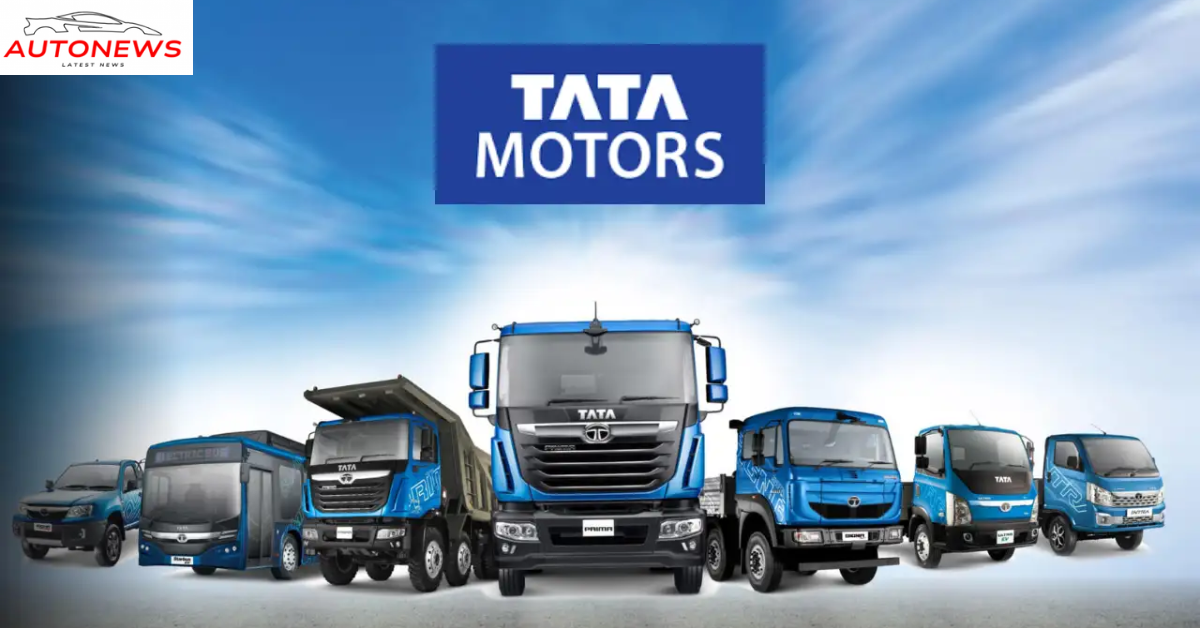Electric and Hydrogen Commercial Vehicles
Tata Motors unveiled at Auto Expo 2025 a comprehensive lineup of zero‑emission commercial vehicles: three electric trucks across LCV, intermediate and heavy-duty segments, plus two next-gen electric buses.
- Tata Prima E.55S
A 55-tonne GVW battery-electric prime mover, it delivers 200–350 km range using a 470 kW drivetrain and 300–450 kWh battery packs. Dual‑gun CCS2 fast‑charging and over 21 Level‑2 ADAS systems give it top-tier modern capabilities. - Tata Ultra E.12
Targeting urban logistics with GVW of ~11.9t, this model supports deck sizes from 17 to 24 ft, battery sizes from 96 kWh to 300 kWh, and a range from 120–350 km. It also features solar panels on container walls to power auxiliary systems. - Electric Mini Trucks
- Ace Pro EV: Ideal for last‑mile delivery, payload ~750 kg, 14.4 kWh battery, 155 km range, and advanced safety tech including collision warnings and rear‑view camera.
- Intra EV Pickup: LCV pickup with ~1750 kg payload, longer range (~150 km), fast-charging support, and regenerative braking.
🚌 Electric Buses
- Ultra EV 9
A 9-metre intra‑city electric bus, seating 23 plus wheelchair space, powered by a 213 kW motor and 200 kWh battery. Charging time ~2 hours; range ~180 km. Equipped with air suspension and easy-access boarding. - Intercity EV 2.0
A 12-metre electric coach seating around 45, powered by a 250 kW motor and 450 kWh battery pack. Delivers over 400 km range, with ADAS features, AQI display, USB chargers, and passenger comfort systems.
🔬 Hydrogen and Flex-Fuel Innovation
At the Bharat Mobility Global Expo 2025, Tata introduced hydrogen-powered trucks (e.g. Prima H.28T and H.55S) using hydrogen internal combustion engines. A pilot with IOCL on key routes—Mumbai–Pune, Jamshedpur–Kalinganagar, and Mumbai–Ahmedabad—is underway. Commercial launches are anticipated within 12–24 months.
Also showcased were flex-fuel and LNG variants, such as Prima G.55S (LNG, range up to ~2400 km), Azura T.19 (biodiesel), and Ace Flex‑Fuel models.
🛣️ Real-World Deployment & Impact
- Tata’s EV bus fleet has clocked over 25 crore km across 10 Indian cities, saving around 140,000 tonnes of CO₂ emissions, with >95% uptime.
- In Bengaluru, 148 new non‑AC Starbus EV buses (by Tata Motors’ subsidiary) were commissioned, adding to BMTC’s fleet and operated under a 12‑year contract with up to 200 km per charge range and multiple safety & accessibility features.
- In Nagpur, Tata emerged as the lowest bidder for introducing 25 AC articulated electric buses (55‑seat, 18 m long) with flash-charging infrastructure.
🚚 Summary Table
| Category | Model(s) | Powertrain | Application | Range / Capacity |
|---|---|---|---|---|
| Heavy-duty truck | Tata Prima E.55S | 470 kW EV, 300–450 kWh | Long‑haul logistics | 200–350 km |
| Intermediate truck | Tata Ultra E.12 | 250 kW EV, 96–300 kWh | Urban freight | 120–350 km |
| Mini truck / Pickup | Ace Pro EV, Intra EV pickup | 104–230 Nm EV options | Last‑mile delivery | ~150–155 km |
| Urban bus | Ultra EV 9 | 213 kW EV, 200 kWh | City transit | ~180 km |
| Intercity bus | Intercity EV 2.0 | 250 kW EV, 450 kWh | Intercity passenger travel | ~400 km |
| Hydrogen truck | Prima H-series (H.28T etc.) | Hydrogen ICE (pilot) | Sustainable long haul | ~550 km (claimed) |
🌟 Strategic Outlook
Tata Motors is investing heavily—Rs 350 billion (~US $4B) over five years—to nearly double their EV portfolio from eight to fifteen models, including more electric, CNG, hydrogen, and flex-fuel vehicles. The company aims for a leading position in India’s evolving transportation ecosystem.
The new lineup integrates Advanced Driver Assistance Systems (ADAS) across all models, an emphasis on digital connectivity, and improved driver ergonomics and safety.
✍️ Final Thoughts
Tata Motors’ latest trucks and buses highlight a bold transformation—from conventional diesel to electric, hydrogen, LNG, biodiesel, and hybrid systems. With advanced safety systems, connectivity features, and environmental stewardship, the company is shaping a sustainable future for commercial transportation, both for urban mobility and long-haul freight logistics.

